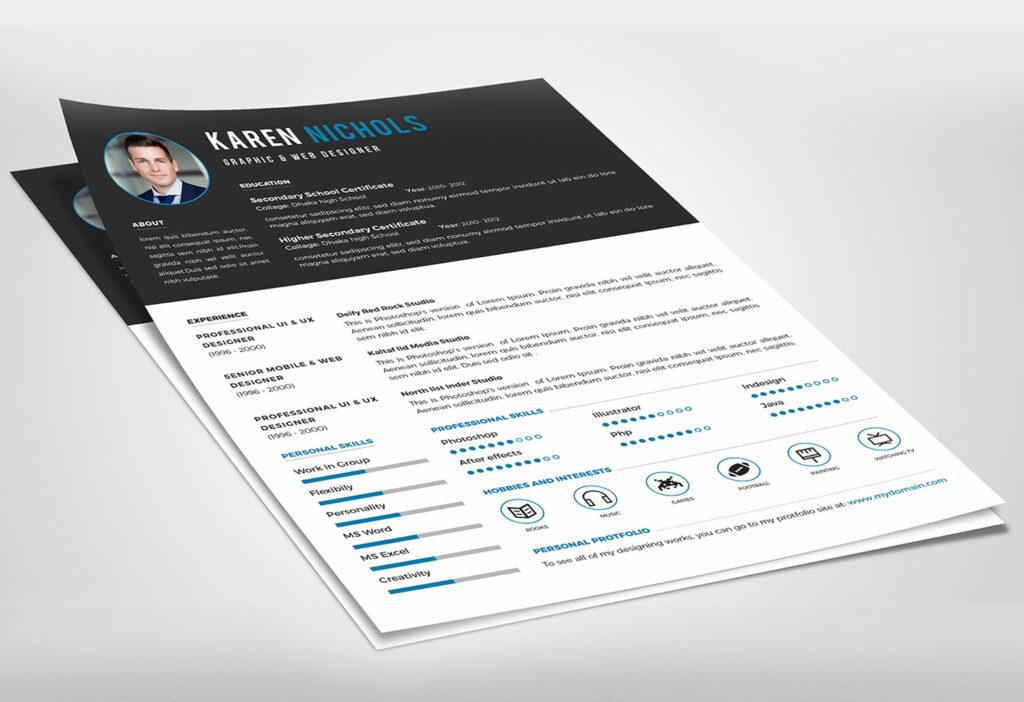Using a resume template is a great way to organize your information. You fill in the supplied fields, and viola—you have a professional-looking resume that will get you noticed by hiring managers. Unfortunately, there is a little more to the process to actually be successful.
You want to choose a great resume template. So, how do you know if it’s a great template or a sub-par one? Here are a few tips to help you find one that will make your resume stand out.
Choose a Resume Format
There are three commonly used resume formats, each with a preferred best use-case scenario depending on the situation at hand.
Reverse-chronological formats focus heavily on your work experience. After the headers and a short professional summary, you list your previous job experience in reverse chronological order. If you’re searching for a similar position in your current field, this format is a good option.
Functional formats pay more attention to your skills. If you’re transitioning from the military to the private sector, a functional resume template will highlight the skills you learned and used in the military. The work experience section is smaller, which can be a bonus for jobseekers who spent several years in the armed forces.
The other common resume template uses a combination format. Equal emphasis is placed on your skills and work experience. With the disruption caused by the recent global pandemic, the combination format is becoming popular with job applicants. Since you’re highlighting both your skills and work history, gaps in employment are not as noticeable.
Select a Readable Font
What is a readable font? Think of any font that is easy to skim over. Fonts without tails (sans serif fonts) are typically your best options, which include the following:
- Avenir
- Calibri
- Cambria
- Constantia
- Corbel
- Franklin Gothic
- Garamond
- Georgia
- Gill Sans
- Helvetica
You’ll notice the Georgia font is included on the list—yes, technically, it is a serif font (the letters have tails). However, it’s still easily legible and can give your resume a more professional appearance.
Along with legibility, there is another reason to pay attention to the type of font you use. Most organizations use an application tracking system (ATS), and these tracking systems can be picky about the choice of font used in them. If the tracking system cannot interpret the font, your resume may not make it to the hiring manager’s desk or inbox.
Use Headers and Bullet Points
Even the best resume templates do not come with headers. You have marked fields that let you know which information to include next, but you still need to break up the sections. The headers should indicate what type of information is included in the section, and you also want to make the headers stand out by using a larger font or bolding the heading.
When it comes to using bullet points, don’t go crazy. Your entire resume should not be filled with bullet points. However, if you’re inserting three pieces or more of information, bullet points can help increase your resume’s readability.
A Great Resume Template Can Help You Land the Job
A great resume template is a crucial starting point in securing the job of your dreams, but so is the information you include.
Take your time and only include information that is relevant to the position you’re applying for. You can be a little more lax when listing skills, but once again, keep it relatively short and simple.
Is a freelance tech writer based in the East Continent, is quite fascinated by modern-day gadgets, smartphones, and all the hype and buzz about modern technology on the Internet. Besides this a part-time photographer and love to travel and explore. Follow me on. Twitter, Facebook Or Simply Contact Here. Or Email: [email protected]







Leave a Reply